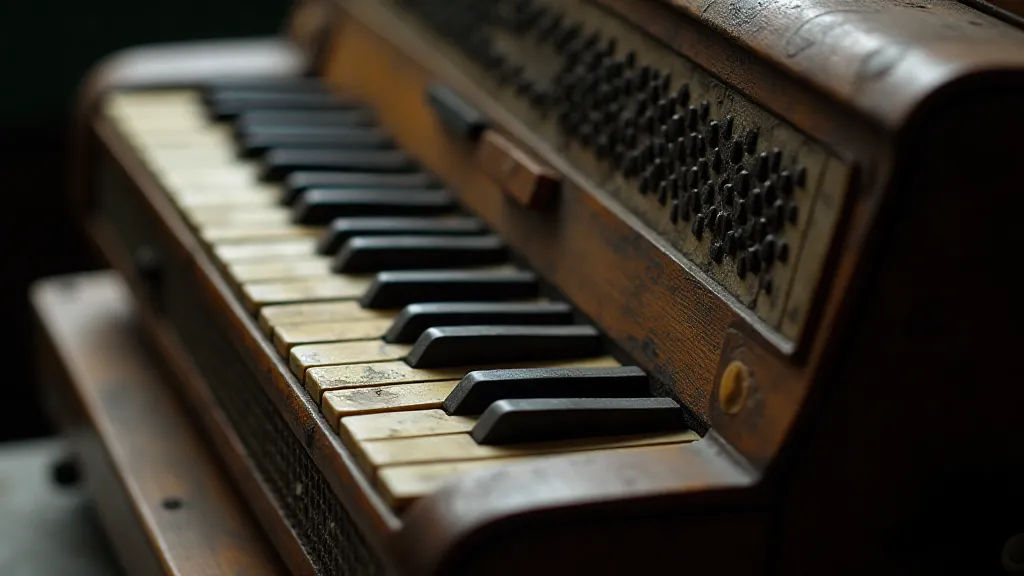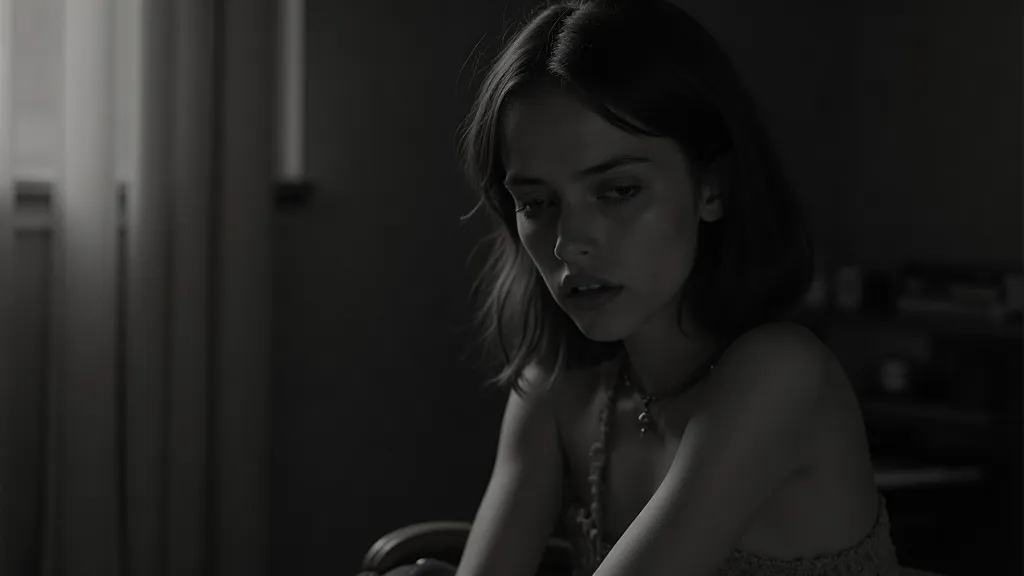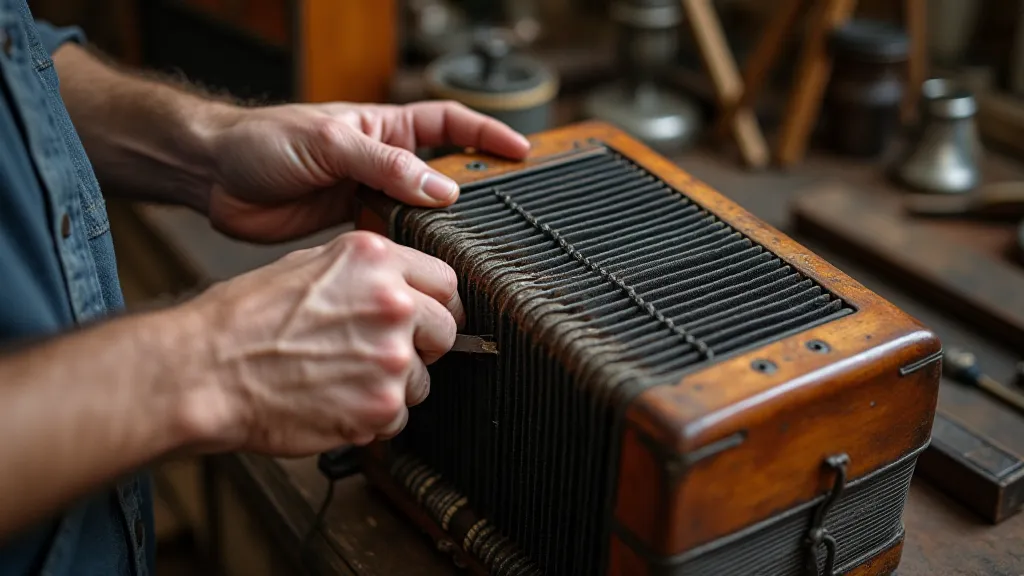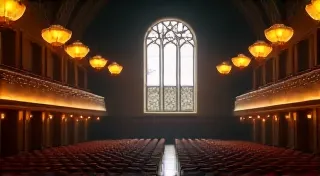The Unwritten Score: Exploring the Soundtrack’s Potential in Silence
We often discuss movie soundtracks with a reverence usually reserved for fine art. We dissect orchestral flourishes, analyze leitmotifs, and celebrate the emotional layering that music adds to the cinematic experience. But what about the absence of music? What artistic weight does intentional silence hold in the realm of film music? It's a question that’s led me down unexpected paths, from dusty antique shops overflowing with forgotten accordions to a deeper appreciation for the deliberate pauses in some of cinema's most powerful moments.
My fascination began not with a booming score, but with the quiet melancholy of an antique accordion I discovered years ago. Its bellows were stiff, its keys yellowed and chipped, but the weight of its history felt palpable. It had witnessed laughter and tears, love and loss, all without uttering a single note in decades. It made me think: sometimes, the most profound statements are made not with sound, but with its absence.

The Historical Context: Sound, Silence, and Early Cinema
Early cinema, ironically, often employed silence not out of necessity, but as a stylistic choice. Before synchronized sound became the norm, films relied on live music – often a pianist or small ensemble – to accompany the action. However, directors quickly realized that constant musical accompaniment could be overwhelming, even distracting. The stark reality of the images unfolding on screen sometimes demanded a pause, a breath. The viewer was left to process, to feel, without the mediating influence of a score. Think about how much the *experience* of those early films must have been shaped by this interplay – a constant negotiation between the visual narrative and the live musical interpretation.
Think of the groundbreaking work of F.W. Murnau in "Nosferatu" (1922). While live music was common for screenings, the film itself existed in a state of potential silence. The absence of a guiding score allowed the viewer to experience the creeping dread and unsettling atmosphere directly, unadulterated by pre-determined emotional cues. The silence amplifies the power of the visuals—the shadows, the expressions, the very architecture of the film’s world. This principle extends beyond just 'Nosferatu'; many silent films understood the power of allowing the visuals to breathe, trusting the audience to engage with the story on a more visceral and imaginative level. Often, it’s in these films that we truly see the power of what some might call "negative space" in the overall artistic work.
This conscious use of silence wasn’t a mere lack of music. It was a deliberate artistic choice, a way to engage the audience on a more visceral level. It asked viewers to be active participants, filling the void with their own emotional responses. It's fascinating to consider how dramatically the landscape of film has changed; what was once a deliberate choice is now often perceived as a rarity – a testament to the enduring power of quiet, contemplative storytelling.
The Craftsmanship of Absence: A Composer’s Perspective
Modern film composers, acutely aware of the power of silence, often utilize it strategically. It’s not simply a matter of failing to write music; it’s about *knowing* when not to. It requires a deep understanding of pacing, character development, and the overall narrative arc. A skilled composer will anticipate moments where music would be intrusive, manipulative, or simply unnecessary. These moments of intentional silence become potent storytelling tools. The best composers are masters of suggestion, leading the audience to a place of emotion without spelling everything out. It's almost as if they’ve learned to sculpt emotional landscapes, much like a painter uses light and shadow.
Think of the work of Jóhann Jóhannsson – his scores for films like "Sicario" and "Arrival" are renowned for their minimalist approach. He understood that a sustained silence could be far more unsettling and impactful than any bombastic orchestral cue. He was sculpting emotional landscapes, using the absence of sound to create tension and dread. Restoring older films, especially those with complex original scores, often involves decisions about exactly *when* to reintroduce music and when to respect those original silences. It's a delicate balancing act. The careful consideration of sonic texture is something that is deeply explored in Beyond the Melody: The Textural Palette of Film Scores, demonstrating just how integral the unspoken elements are to crafting a truly immersive cinematic experience.
There's a parallel here with the restoration of antique instruments, like that old accordion. It’s not enough to simply repair the mechanics; one must understand the instrument's history, its intended sound, and the context in which it was played. Similarly, in film restoration, we must strive to preserve the original artistic intention, even if that intention included periods of silence.
The Emotional Resonance of Quiet
Consider a scene where a character is experiencing profound grief. A constant, mournful melody might feel manipulative, almost dismissive of the character's pain. But a moment of silence – a space for the audience to truly absorb the weight of the loss – can be far more impactful. It allows the viewer to connect with the character on a deeper, more empathetic level. It's a space for reflection; a moment for the audience to process the information presented and to understand the emotional core of what is happening.

Silence isn’t just an absence; it’s a presence. It’s a vacuum that draws attention to the unspoken, the unexpressed. It’s a canvas onto which the audience projects their own emotions and experiences. The power of those moments of quiet is magnified by the anticipation surrounding them—the knowledge that a powerful emotional release is coming, but the delayed gratification only intensifies the impact.
Collecting and Preserving Silence: An Unconventional Passion
For those passionate about film music, the appreciation for silence presents an unconventional, yet compelling, collecting impulse. It isn's about amassing scores; it's about seeking out films where the use of silence is particularly striking. It's about understanding the directorial and compositional choices that led to those moments of quiet. It's a pursuit that often leads to a deeper appreciation of the subtleties of filmmaking – the nuances of pacing, the power of visual storytelling, and the ability to evoke emotions without relying on musical cues.
Restoring films that heavily utilize silence presents its own unique challenges. It’s not simply about cleaning up the audio; it's about ensuring that those silences remain pristine, unmarred by unwanted noise or artificial sound effects. The integrity of the film's artistic vision depends on it. The preservation of these moments of quiet requires a reverence for the original intention – a commitment to honoring the artistic choices that shaped the film's impact.
The accordion I found years ago represents more than just a forgotten instrument. It's a reminder that the most powerful statements are often made not with sound, but with its absence. It’s a symbol of the unwritten score – the potential for emotional resonance that lies within silence. Those moments are often the hardest to recreate, and the most revealing of a film’s true artistry.

Next time you’re watching a film, pay attention not only to the music, but also to the silences. Listen to what isn't being said. You might be surprised by what you hear. Understanding the deeper meaning requires more than just listening; it requires careful consideration and a willingness to engage with the film on an emotional level. As explored in The Submerged Symphony: When Silence Speaks Louder Than a Film Score, these intentional pauses become powerful tools for conveying meaning and creating a truly immersive cinematic experience.





